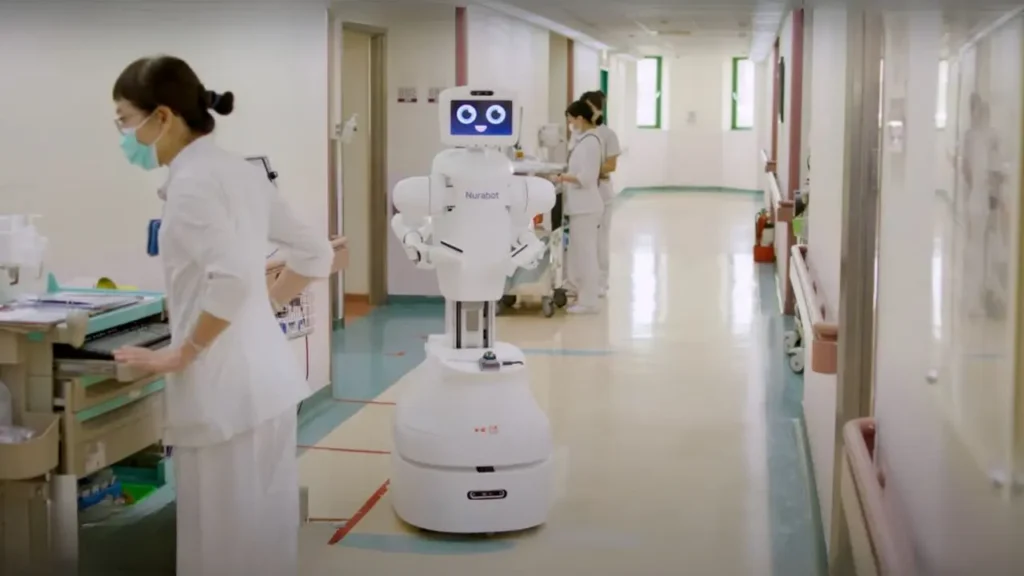In a powerful collaboration set to transform the future of healthcare, Kawasaki and Foxconn have unveiled a new robot designed to tackle hospital scutwork, reduce staff workload, and improve patient care. This groundbreaking innovation, known as the Kawasaki Foxconn Robot, represents the latest step in the global push to integrate robotics and automation into essential healthcare services.
Kawasaki Foxconn Robot: A Solution for Overwhelmed Hospitals
Healthcare workers across the globe are under immense pressure. From managing critical care to handling administrative tasks, nurses and support staff often face exhausting work schedules. One of the major contributors to burnout is the repetitive, non medical duties often referred to as hospital scutwork tasks such as transporting supplies, delivering meals, and assisting with patient movement.
Recognizing this challenge, Japanese engineering giant Kawasaki Heavy Industries and Taiwan’s tech powerhouse Foxconn have come together to create an intelligent robotic assistant that could reshape the way hospitals operate.
Dubbed the Kawasaki Foxconn Robot, this cutting edge machine is not merely a showpiece of technology it’s a practical solution to a real world problem faced by healthcare systems worldwide.
The Birth of Nurabot: The Nursing Assistant Robot
The Kawasaki Foxconn Robot, also referred to as Nurabot, is based on Kawasaki’s existing social robot platform known as Nyokkey. However! unlike its predecessor, Nurabot has been carefully re-engineered to meet the demanding requirements of hospital environments.
This nursing assistant robot is capable of performing essential but time consuming tasks, including:
Transporting medical equipment and supplies
Assisting in patient movement and mobility
Delivering meals and medications to rooms
Providing basic interaction and comfort to patients
Navigating complex hospital layouts autonomously
The integration of artificial intelligence, robotics, and healthcare specific design makes Nurabot far more than just a piece of machinery it’s an essential partner for overworked medical staff.
Why the Kawasaki Foxconn Robot Could Be a Game Changer
The global healthcare industry is currently facing an unprecedented crisis. According to the World Health Organization (WHO), there could be a shortage of over 10 million healthcare workers by 2030. Burnout, stress, and high turnover rates have already placed hospitals under significant strain.
By introducing robots like the Kawasaki Foxconn Robot, healthcare facilities can offload repetitive tasks to machines, allowing human professionals to focus on complex, hands on care that only trained medical staff can provide.
This isn’t about replacing nurses it’s about empowering them. As healthcare workers spend less time on routine errands, they can dedicate more attention to patients, improving care quality and job satisfaction simultaneously.
The Powerhouse Partnership: Kawasaki and Foxconn
The union of Kawasaki Heavy Industries and Foxconn brings together two global leaders in robotics, engineering and manufacturing. Kawasaki’s deep expertise in robotic development, particularly in industries like aerospace, automotive, and medical technology, provides the engineering backbone of the project.
Meanwhile! Foxconn best known as the world’s largest electronics manufacturer offers unparalleled production capabilities and experience in developing smart, scalable technologies.
Together, they aim to ensure that the Kawasaki Foxconn Robot isn’t just an experimental prototype, but a scalable, reliable product ready for mass deployment in hospitals by 2026.
Balancing Technology with Human Compassion
A key factor in the success of healthcare robots is their ability to operate in human centric environments without creating discomfort or fear. The Kawasaki Foxconn Robot has been designed with this in mind.
Nurabot’s design is friendly, approachable, and intuitive. Its interactions with patients are limited to supportive tasks, ensuring that the human touch remains at the heart of patient care. While it efficiently handles logistics, real nurses and caregivers continue to provide empathy, emotional support, and clinical expertise.
This thoughtful balance highlights a vital truth: robots in healthcare are not here to replace humans they are here to support them.
A Glimpse Into the Future of Healthcare
The introduction of the Kawasaki Foxconn Robot reflects a broader global trend towards smart hospitals and AI driven healthcare. From robotic surgical assistants to automated medicine dispensers technology is revolutionizing how medical facilities operate.
With the promise of reduced workloads, increased efficiency, and improved patient experiences, the world is gradually moving towards a future where healthcare workers and robots collaborate seamlessly.
By 2026, when the Kawasaki Foxconn Robot is expected to hit the market, many hospitals may find that such intelligent assistants are no longer a luxury but a necessity.
How Kawasaki and Foxconn Are Redefining Healthcare
The Kawasaki Foxconn Robot is more than just a technological marvel it’s a timely response to an urgent healthcare challenge. As hospitals worldwide grapple with staff shortages and rising demands, innovative solutions like this can ease the burden on human workers, ensuring that patient care remains compassionate, efficient, and accessible.
While there are still hurdles to overcome, including regulatory approvals, staff training, and integration with existing hospital systems, the path forward is clear. With thoughtful design, responsible deployment, and a focus on supporting not replacing healthcare workers, the Kawasaki Foxconn Robot could become a vital part of modern medicine.

